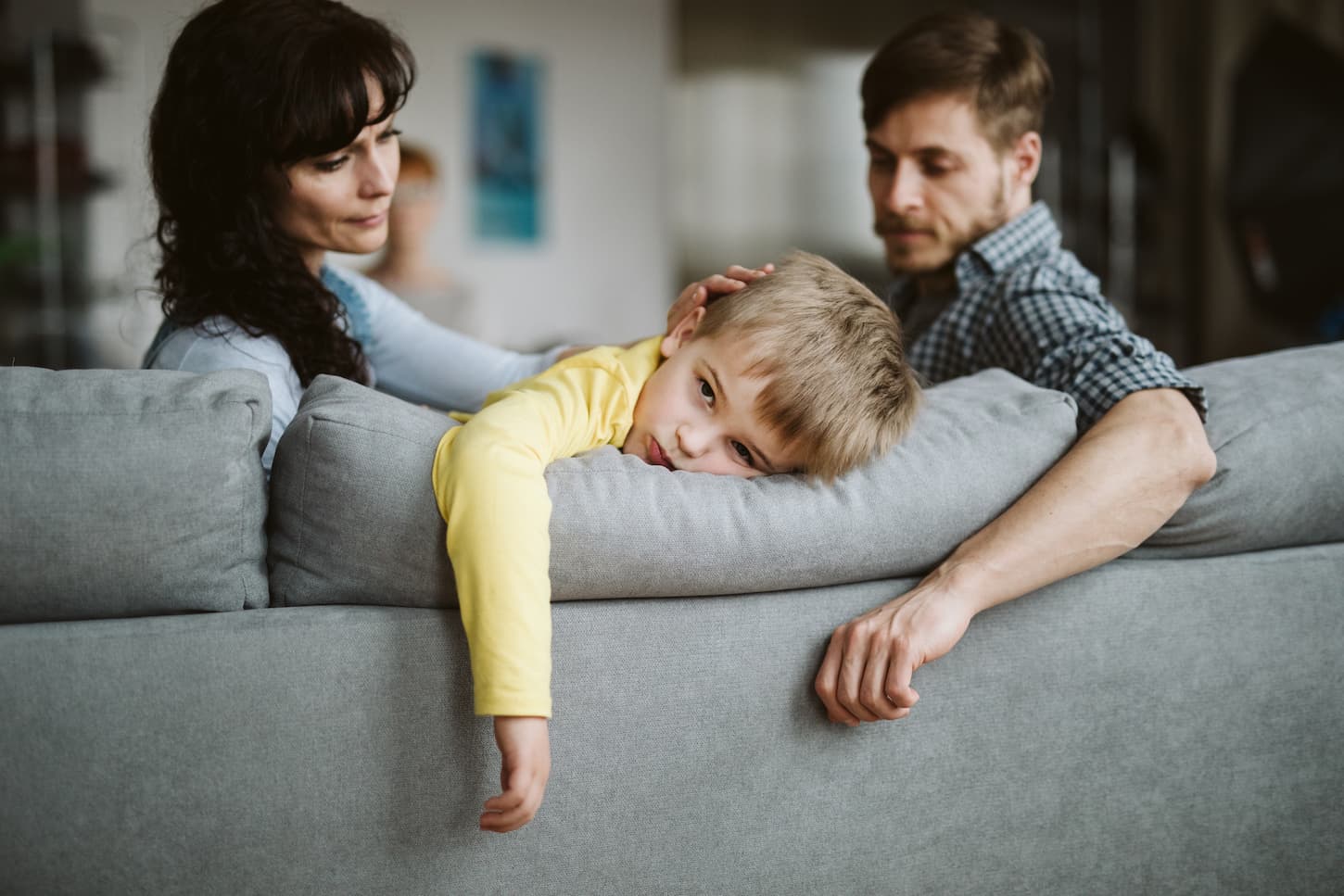As first-time parents (or more experienced ones looking to do things differently), we may search for information about sleep training. Many parents find that sleep training is the best way to get their babies to sleep sweetly and soundly through the entire night.
After surveying 3,800 parents on its effectiveness, the first survey of 1,500 parents said it worked with their kids. The second survey of 2,300 parents had 33.9% saying yes, another 33.9% didn’t need it, 22% said no, and 10.2% said yes, but with conditions.
However, sleep training may not work for everyone since we may not need it or be practical for some children. In this article, we’ll look at some of my recent research in which I asked a large group of parents what worked for them and how new parents can give themselves the best chances of success.
This article will discuss what sleep training entails, the survey results and data from parents interviewed, how to practice it, and when to seek medical assistance.

What Is Sleep Training?
Sleep training teaches a baby to go to sleep by themselves and fall asleep again when waking up during the night. While some babies learn this themselves, sleep training by the parents is often essential.
Sleep training is excellent (after all, this is my website), but that doesn’t mean it’s universally fantastic. Later, we’ll look more in-depth into how we might be able to decide if sleep training is a good option for us and offer some great methods and tips to get started!
Does Sleep Training Always Work?
Sleep training doesn’t always work, but many parents find it a fantastic way to get kids used to sleep well quickly and efficiently. In addition, some babies don’t need to be sleep trained, as they will learn to sleep well by themselves.
There are quite a few variables that will affect sleep training. For example, different babies might need other methods or lengths of time, and the environment and consistency of sleep training will also affect results.
There are at least four factors I can think of that might make-or-break whether sleep training will work:
Consistency
- Sadly, there’s no sleep training magic wand! Any sleep training method takes time, and while we’re waiting to see results, we’ll need to be consistent to give ourselves the best chance of success.
- Giving up too early into the process or changing it because of uncertainty might sabotage what would have been a successful method!
Distractions
- While they are sometimes effective, some baby sleep stimulation gadgets can become a distraction to a baby and keep them up for too long, causing our efforts to be wasted.
- Ensure the nursery is dark and get rid of light sources in the baby’s environment. White noise apps or machines can also be a fantastic way to set up a calm sleeping environment.
Naps
- Whichever sleeping method we choose, make it a crucial part of your child’s sleeping routine.
- Sleep training doesn’t just have to be a nighttime method – we can also use it at naptime.
Train kids to fall asleep at any time!
- Sleep training is a method created so that a child can sleep at any time.
- It’s good to train our kids to fall asleep even when wide awake. Then, just like that, we’ll be able to have a lovely calm baby, whether they are drowsy or not.
Read on to see some of my research results, where I asked parents if sleep training worked for them and got some of their best tips to set us up for the best chance of success!

How Effective is Sleep Training?
If a child doesn’t learn to settle through the night by themselves, sleep training is an effective method to teach them. Unfortunately, in surveys, only 22% of respondents stated that they had tried sleep training but found it ineffective.
Of course, kids are super individuals, and there are a lot of factors that alter the effectiveness of this technique.
The tips I’ve included in this article can significantly help sleep training, but we’ll also find that this process can be a mix of trial and error. First, I wanted to know how often sleep training works for parents, so I created my surveys.
Next, I posted polls in Facebook groups and collated the results.
Poll #1: I surveyed a group of approximately 1,500 parents, of which twelve replied with specific answers and details.
In this poll, all the respondents agreed with the effectiveness of sleep training, saying it worked for them – that’s a 100% return!
Of course, while this is a positive result, I must take it with a grain of salt. Twelve is a low response rate, and it’s not fair to conclude that is the case for all parents.
Poll #2: Survey of approximately 2,300 parents.
To get a better sample size, I posted again in a different group. This time I had a lot more replies. I also included a couple more choices for the participants to open the floor to the possibilities of different opinions. This time, the results were:
- 33.9% said yes to sleep training
- 33.9% said they didn’t need it
- 22% said no
- 10.2% said yes, but with certain conditions

I decided to put this into a pie chart, where it’s a little easier to see the data.
The first 1,500 groups of parents interviewed all agreed on the effectiveness of sleep training, saying it worked for them.

It’s still not a scientific sample size, but it drew some exciting results! We can see from this chart that most parents either found sleep training success or had babies that fell asleep naturally by themselves, with just under a quarter saying that they tried training with no results.
Of course, raw data doesn’t consider the individual nature of these kinds of things and that every child will respond differently at certain ages and under other methods and conditions.
One respondent to my survey summed this up perfectly, reporting that:

Or if that’s too hard to read, here it is again in a text format.
I tried sleep training at around 6 or 8 months, and it was a disaster. So, I tried again at approximately ten months. It took four days, and we were good to go!
Nevertheless, these surveys offer some encouraging statistics to suggest that sleep training is effective, and it never hurts to try. Read on to find out my favorite methods and tips that we can use if choosing to start sleep training.
Parent’s Advice on Sleep Training
Of course, it’s always better to learn from experience with this kind of method. So, when I ran my survey, several parents offered helpful tips for sleep training kids as efficiently as possible.
Here are a few of my favorites!
- Establish a bedtime routine – Routine is crucial. Keeping sleep training to critical moments in a baby’s day (such as bath time or after feeding) can help them get used to when they should fall asleep.
- Learn our baby’s sleep cues – Every baby is different but getting used to our child’s behavioral patterns gives us an idea of when they’re ready to fall asleep. These might include obvious cues (like yawning) or counter-intuitive ones, like a baby getting cranky and noisy when too tired.
- Always put a baby down to sleep while awake – The crucial aspect of sleep training is that our babies learn to sleep without us. We won’t have successfully done this if we’re there when they fall asleep. So, the less we let our baby sleep in our company, the better.
- Delay our response – As tempting as it is to run in and console a crying baby; it’s more effective to delay our response, which will give the baby a little extra time to learn sleep training. Then, if they are safe in a crib and well-fed, there’s nothing to worry about when they cry.
- Time the training perfectly – We should employ sleep training in calm, relaxing conditions that’ll give the baby an obvious clue that it’s time to sleep. If our child is in an unfamiliar environment or stressed out, an otherwise excellent sleep training method is unlikely to work.
What’s The Best Age for Sleep Training?
The best age for sleep-training kids is often between four and six months old. At this age, kids are usually old enough to be trained and learn how they’re supposed to sleep without having developed unhealthy habits that can be tricky to break.
Again, this is an individual thing. Some kids might not respond well to sleep training even before the ten-month mark, while others may have already decided that a solid night’s sleep is good for them by the time they’re four or five months old.
Still, if we are unlucky and our baby is particularly hesitant to learn to sleep through the night, don’t despair. Instead, find out all about six methods that can be great weapons in the battle to get a consistently great night’s sleep!
The Five Best Methods for Sleep Training
The best method for sleep training is up for debate, and it will also depend on what works best for our kids and us. It might be a good idea to discuss these ideas with a pediatrician, who may have their own opinions.
While I can’t offer one sure-fire method, I can suggest the following five tried-and-true techniques, and I’m sure that at least one will work great for parents.
The Chair Method
- The chair method is simple – to help a child fall asleep, sit on a chair near the crib to comfort them. Each time they go to sleep, move the chair a little further away from the crib towards the door.
- After a few tries, we’ll find that the chair has moved to the door, and we can try leaving the baby to fall asleep by themselves.
- This method isn’t for everyone (as some babies might get scared to wake up with no parent there), but it’s simple and low effort, so definitely worth a try.
The ‘Pick Up and Put Down’ Method
- The ‘pick up and put down method’ is also simple but tiring. In this method, we’ll pick up our babies every time they cry and put them back in the crib when they stop.
- Repeat until they settle down to sleep.
- While this can feel horrible at first, we’ll find that after time our baby will learn to fall asleep faster, and hopefully before too long without crying at all.
The ‘Bedtime-Hour Fading’ Method
- The bedtime-hour fading method is best for kids who cry for an exceptionally long time before bed due to not being tired. It works by adjusting the body’s natural circadian rhythms to get to the bedtime that suits the parents in small steps.
- The first step is to note when our baby seems tired and let them fall asleep naturally. If they cry a lot, pick them up and try again later.
- Make sure to take note of the time that the baby fell asleep. Then, move the bedtime a little closer (between 5 and 15 minutes) to our desired bedtime the next day.
- Repeat this process until the baby naturally falls asleep at the time that suits the parents.
The ‘Ferber’ Method
- The Ferber method involves gradually increasing the time we let our babies cry before checking on them. So, for example, if we wait two minutes the first time, we’ll wait for three the next, and so forth.
- With this method, it’s imperative to keep consistent and limit our interactions to let them learn to sleep independently. Checking up on the baby before the correct time interval will only undo our work in getting to that point!
The ‘Cry-It-Out’ Method
- The ‘cry-it-out’ or ‘extinction’ method is the simplest in theory, though we might not find it the most pleasant. In this technique, we’ll leave our babies to cry and let them learn by themselves that they’re just getting in the way of their own good night’s sleep.
- One important caveat of this is that we must feed our babies in a safe environment before ignoring their cries. If we find that our child has thrown up consistently over several nights, consult a pediatrician and ensure nothing is medically wrong.
- Some people consider this harsh or brutal (and indeed, we’ll need both earplugs and forgiving neighbors if we have thin walls), but through this method, kids can learn to fall asleep on their own in as little as three or four nights.
- Hopefully, at least one of these methods will work. If not, check out the section below for links to some more accessible sources of information.

Key Takeaways and Next Steps
There’s plenty of information if we’re interested and want to learn more about sleep training our babies. Why not check out the other articles on sleeptrainingkids.com, like these recent popular articles:
- Can A Baby Sleep in Their Own Room from Birth?
- Is it Ever OK to Not Sleep Train Your Baby? An Honest Guide
Resources
Learning about parenting or sleep training techniques is important to learn from various reputable sources. These are the sources used in this article and our research to be more informed as parents.
- Bellefonds, Colleen de. “How to Sleep Train Your Baby.” What to Expect, 2020, https://www.whattoexpect.com/. Accessed 01 July 2021.
- Birnbaum, Cara. “Sleep Training Your Baby: 7 Tips for Success.” Parents, June 2020, https://www.parents.com/. Accessed 01 July 2021.
- Brewster, Ariel. “9 reasons why sleep training didn’t work.” Today’s Parent, May 2021, https://www.todaysparent.com/ Accessed 01 July 2021.
- Brown, Amy, and Lyndsey Hookway. “Sleep-training and babies: why ‘crying it out is best avoided.” The Conversation, March 2021, https://theconversation.com/ Accessed 01 July 2021.
- Canapari. “How to Sleep Train Your Baby.” The New York Times, 2020, https://www.nytimes.com/article/how-to-sleep-train-baby.html. Accessed 01 July 2021.
- Hollowc2. “When and How to Sleep Train Your Baby.” Health Essentials from Cleveland Clinic, May 2021, https://health.clevelandclinic.org/.Accessed 01 July 2021.
- Kansagra, Sujay. “Sleep training your child: myths and facts every parent should know.” Duke Department of Pediatrics, 2017, https://pediatrics.duke.edu/ Accessed 01 July 2021.
- Karp, Harvey, et al. “The Fatherly Guide to Baby Sleep Training.” Fatherly, 2020, https://www.fatherly.com/baby-sleep-training-guide/. Accessed 01 July 2021.
- Liu. “COMMENTARY || Why sleep training will not hurt your child.” University of Alberta, 2019, https://www.ualberta.ca/folio/2019/03/commentary–why-sleep-training-will-not-hurt-your-child.html. Accessed 01 July 2021.
- Martinelli, Katherine. “Finding a Sleep Training Method That Works for Your Family.” Child Mind Institute, 2020, https://childmind.org/. Accessed 01 July 2021.
- Stephens, Carissa. “8 Self-Soothing Techniques to Help Your Baby.” Healthline, 2020, https://www.healthline.com/health/baby/self-soothing-baby. Accessed 01 July 2021.